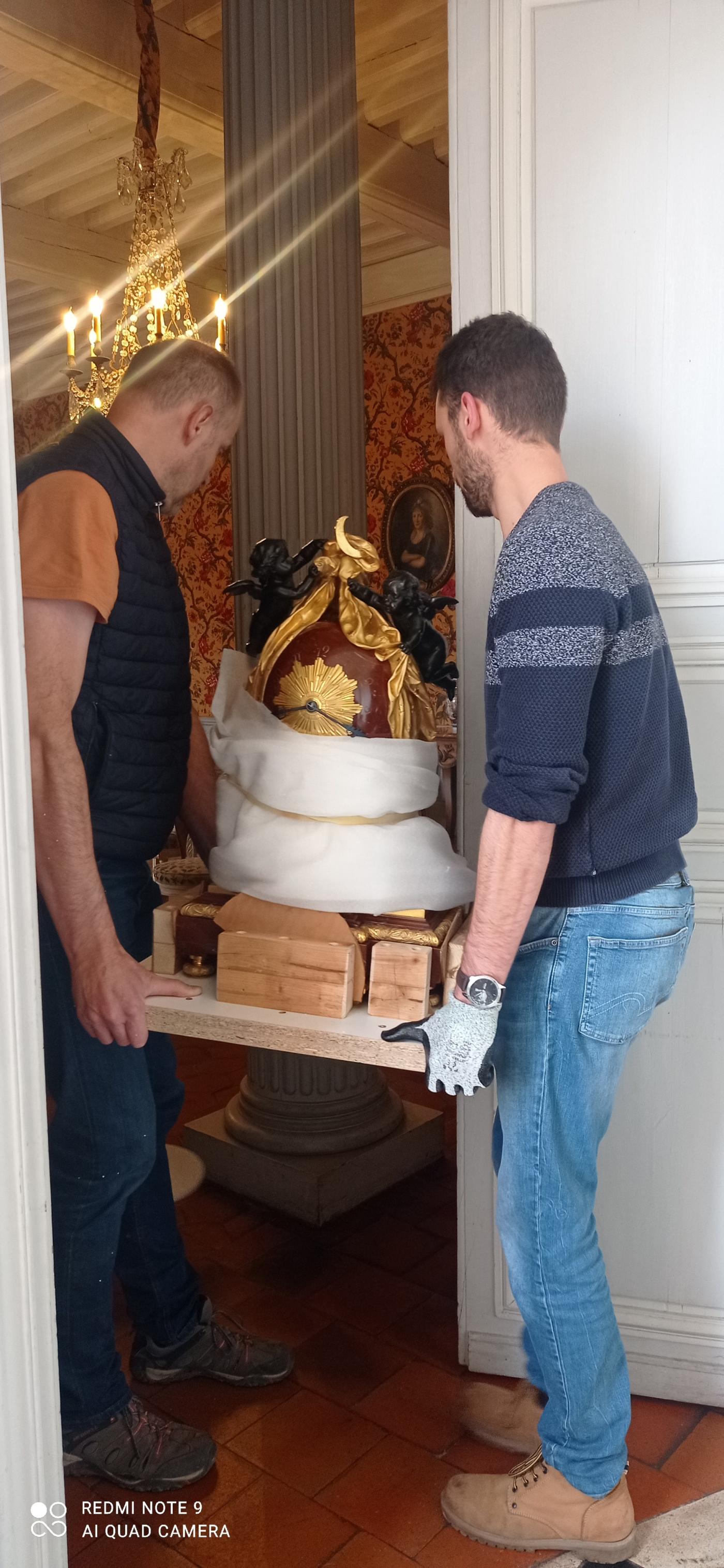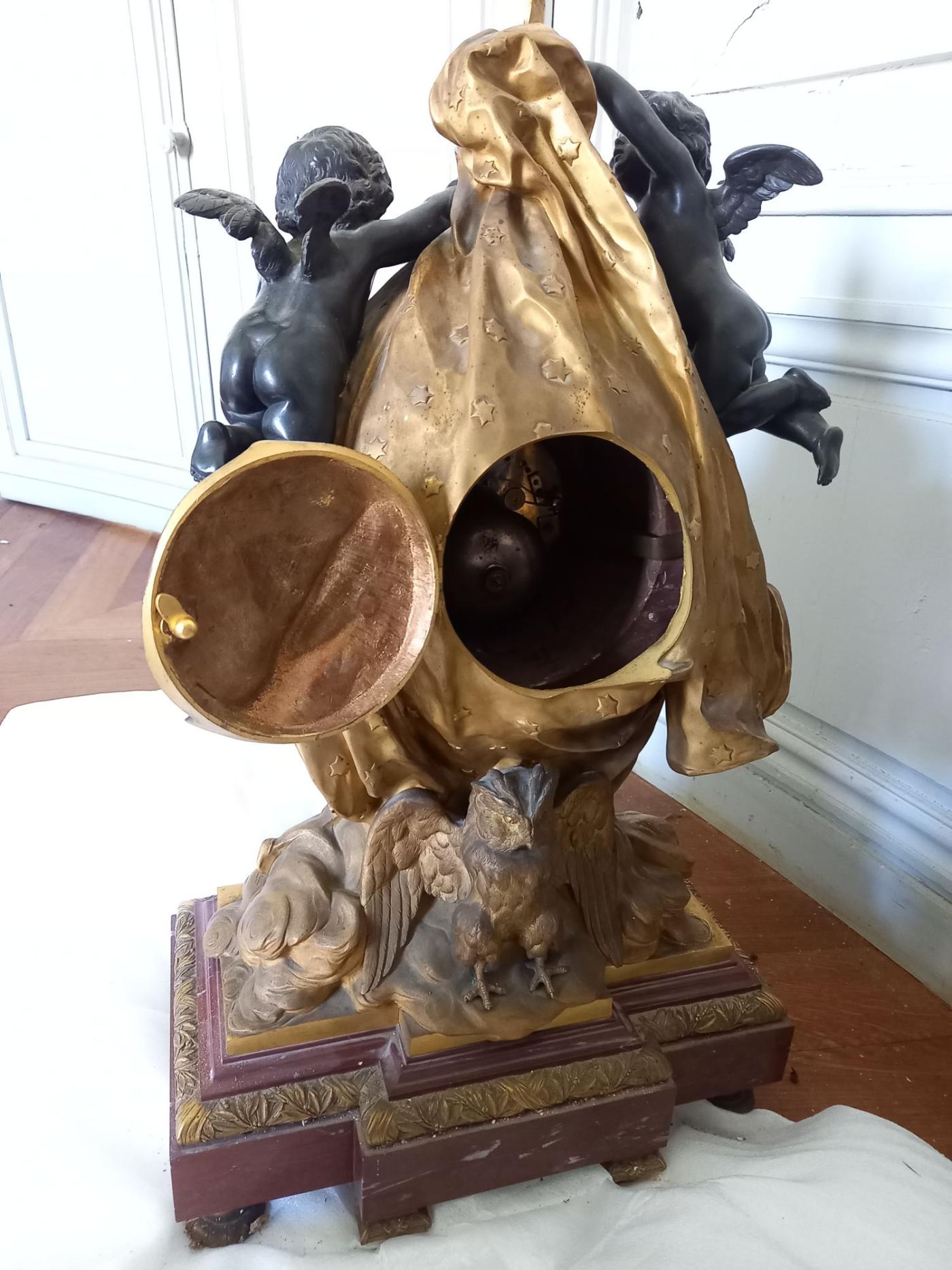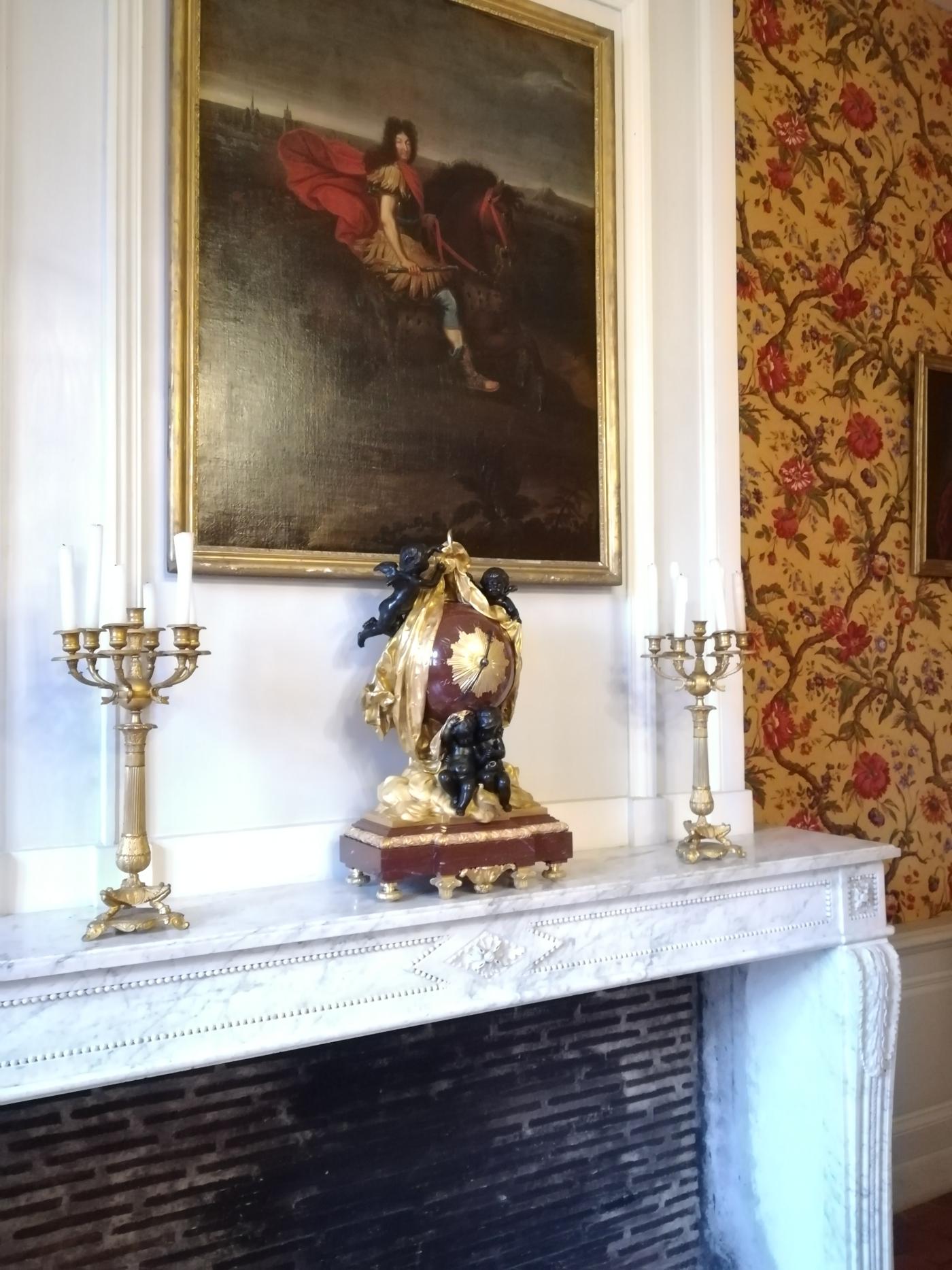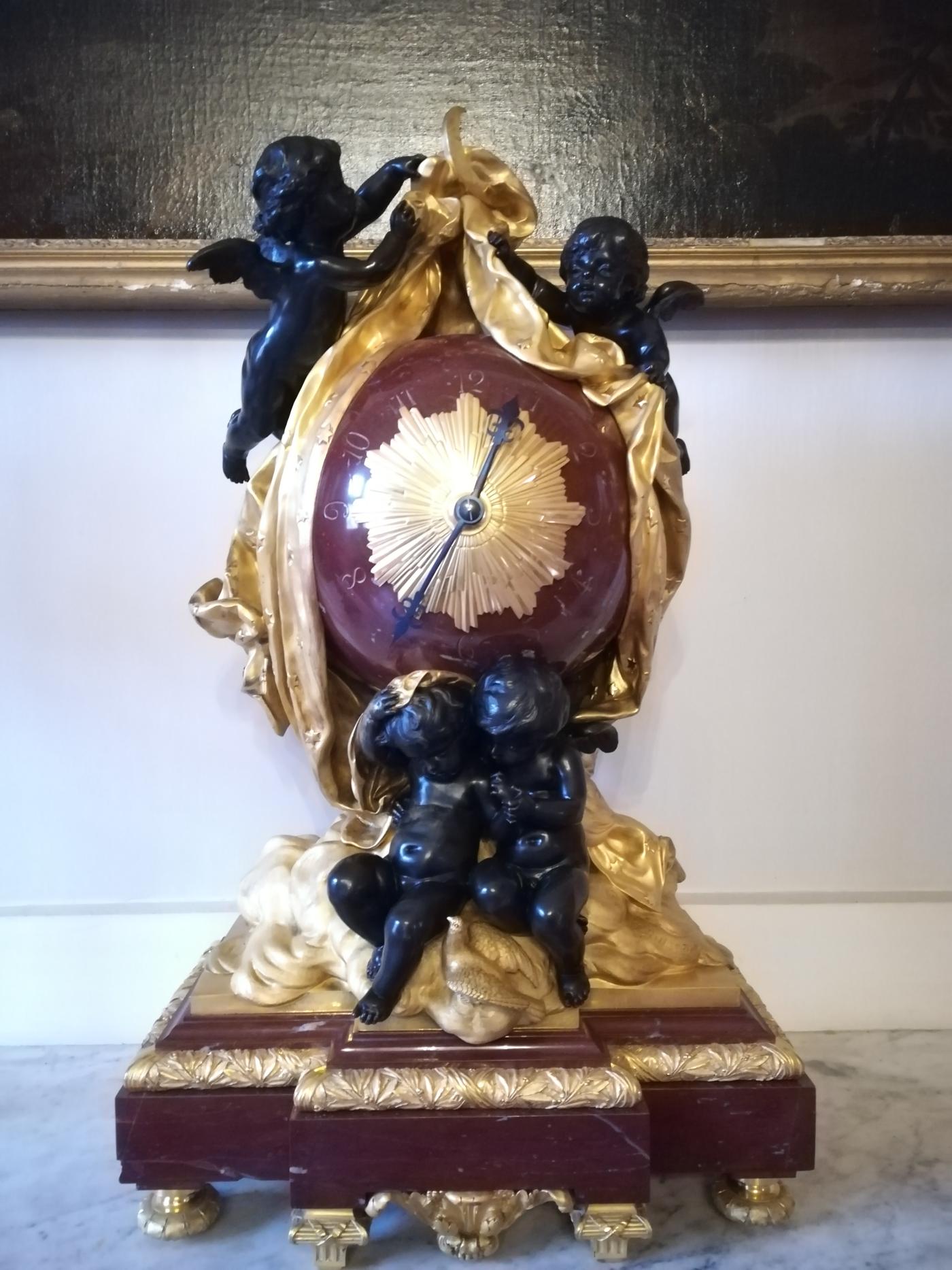Our clocks are chiming at the château!
23 December 2022
In late November, two clocks from the Château de Chamerolles were finally brought back from restoration. They had gone to Marcel and Michel Boulanger, a father-and-son team specialising in the restoration of old clocks in Eure-et-Loire, for almost eight months.
The "Cartel" clock
One of these clocks is called a "cartel", and is a wall clock. The word “cartel” originally referred to the frame alone, but later the clock was known as a cartel or cartel clock, by extension. Cartels are either directly affixed to the wall, or supported by a small base that is itself fixed to the wall. The Chamerolles cartel probably dates from the 19th century, although its style is reminiscent of the 18th century. It was purchased from an antique dealer together with a wall barometer, which it complements. It had hung in the Geographer's Office since Château de Chamerolles opened in 1992, but had never worked. It now strikes every half hour.
The porphyry clock
The second restored clock is a spectacular egg-shaped clock, made entirely of porphyry (a red stone speckled with white) and of gilded and blackened bronze. It was donated to Château de Chamerolles in 2018 by the Louis Lebrun Hospital in Neuville-aux-Bois. The mark of the bronzier, Emile-André Boisseau, dates it to the late 19th century. Its style is neo-baroque. We have no information on its origin or indeed on how it ended up at the Pierre Lebrun Hospital. Because of its mechanism, size and weight (a whopping 65 kilos), it is a truly remarkable clock. Previously, it would not work and did not even have a key. The restorers completely dismantled it in the workshop, repaired it, restarted it and created a made-to-measure key to rewind it.
Spotlight on the porphyry clock
This is most probably a representation of night giving way to day: small putti (or cherubs) unveil at the top a drape decorated with stars to reveal the rays of the sun, which make up the dial of the clock. At foot level, on the front of the clock, is a dove, a diurnal bird, which recalls the little owl, a nocturnal bird located opposite, at the back of the clock on the night side.
The porphyry “egg” clock now takes pride of place on the fireplace in the Salon Jaune, among other 18th century objects. It was in fact common practice in the 18th century to place clocks on chimneys. These were the only structures strong enough to safely support the weight of the pendulum!
In conclusion
These two clocks will be rewound every week by château employees, allowing them to strike in our rooms and give our visitors an even more immersive experience. After sight and smell, it is now the turn of hearing. Indeed, even the strikes were designed to sound “like” the 18th or 19th century, so keep your ears open!
Did you know?
By the way, do you know the difference between a clock and a timepiece? It's simple, all clocks are timepieces but not all timepieces are clocks. It's even simpler: all clocks, whether floor, mantel, or hanging, have a striking mechanism, derived from the French word “cloche” (meaning bell). So any timepiece without a striking mechanism is just a timepiece, not a clock. Our modern battery-powered clocks are therefore timepieces, but not clocks in the strict sense.





